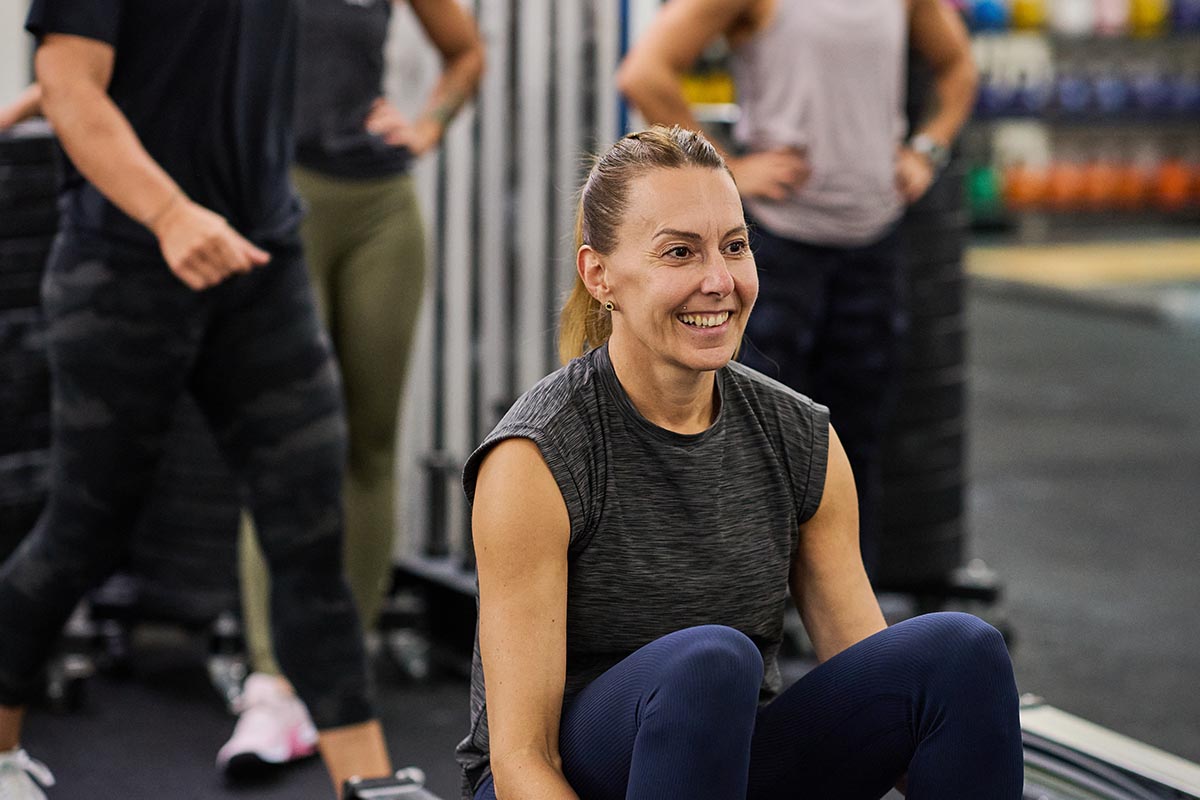Muscle health for longevity: The health and aging powerhouse

Muscle health has been the overseen factor for health and longevity until the recent years. When it comes to fitness adaption for longevity, the heart and lungs often steal the spotlight. We’ve been taught to associate heart health with lifespan and strong lungs with fitness. However, the role of muscle health for longevity is critical. Muscles are not only essential for movement and strength but are also crucial for metabolic health, disease prevention, and overall well-being. But just as muscles can build resilience, they can also decline—often without visible signs from the outside—diminishing their impact on long-term wellness.
How muscle gets unhealthy: the hidden changes
Muscles can become unhealthy due to aging, inactivity, poor diet, or hormonal changes. Over time, if we don’t engage in regular movement and strength training, muscles lose density and efficiency. This often leads to “marbling,” where fat infiltrates muscle tissue (intramuscular fat or “marmorization”). Unlike visible body fat, intramuscular fat isn’t noticeable from the outside, so someone can look lean or fit while having compromised muscle health. This fatty infiltration weakens muscle function, reducing its effectiveness for blood sugar stabilization and metabolic health, critical factors in muscle health for longevity.
Muscles: more than just strength
Muscles are associated with strength and movement, allowing us to lift, push, pull, and stabilize—important for daily activities like carrying groceries or sports. As the body’s “movement organ,” muscles also play a vital role in metabolic processes essential for longevity. Unlike fat, which stores energy, muscle tissue is metabolically active, burning calories even at rest. This makes maintaining muscle mass essential for energy balance and metabolic health, both key to muscle health for longevity.
The role of muscle in metabolism and health
Muscles help regulate metabolism by storing glucose as glycogen, which stabilizes blood sugar levels and reduces the risk of insulin resistance. This capacity for glucose management is directly tied to muscle health for longevity. Additionally, muscle contractions during physical activity release myokines—proteins that reduce inflammation, promote fat oxidation, and support other organs. A decline in muscle mass, particularly from inactivity, reduces myokine production, weakening our metabolic profile. This decline contributes to age-related diseases, highlighting the importance of muscle health for longevity.
Why lifting heavy weights is key for muscle health for longevity (yes, that includes women)
To maintain optimal muscle health for longevity, strength training with heavy weights is essential. Lifting heavy not only builds muscle but also enhances bone density, joint stability, and metabolic efficiency. For women, lifting weights is crucial in countering muscle loss, which accelerates with aging and hormonal changes. Contrary to myths about becoming “bulky,” heavy lifting for women promotes lean muscle, reduces body fat, and strengthens overall resilience, supporting muscle health for longevity.
Heavy weight training triggers greater muscle adaptation, helping to retain mass, increase power, and improve movement—all crucial for healthy aging. Additionally, heavy lifting is one of the best defenses against osteoporosis, particularly important for women post-menopause when bone density declines. Regular strength training helps combat both muscle and bone loss, integral components of muscle health for longevity.
Muscle as a protector against age-related decline
Muscle health for longevity also plays a significant role in preventing age-related decline in power, or the ability to generate force quickly. This capability is essential for balance and fall prevention, both key to maintaining independence in older age. Muscle mass also links closely with bone health. For women especially, the hormonal changes of menopause raise the risk of osteoporosis. Weight-bearing and resistance exercises help slow bone density loss, reducing fractures and supporting muscle health for longevity.
The unseen risks of unhealthy muscle
Unhealthy muscle may not be visible, but its impact is significant. Fat-infiltrated muscle loses elasticity and strength, leading to chronic inflammation, poor blood sugar regulation, and reduced metabolic efficiency. Without visible signs, people may underestimate the health risks of unhealthy muscle. This “silent” risk emphasizes the importance of maintaining muscle health for longevity, not only for physical strength but also for optimal metabolic function.
Building and preserving healthy muscle
For optimal muscle health for longevity, building and maintaining muscle is essential. Strength training exercises—such as weightlifting, resistance bands, and bodyweight exercises—are highly effective for increasing muscle mass and strength. Combining strength training with cardiovascular exercise, such as brisk walking, cycling, or swimming, supports both muscle health and cardiovascular fitness.
Adequate protein intake is also vital for muscle repair and maintenance. Protein from lean sources like chicken, fish, legumes, and eggs helps offset muscle loss. As we age, our bodies require more protein to counteract natural declines in muscle mass, making balanced nutrition essential to support muscle health for longevity.
Muscle health for longevity: the key to aging well
In the pursuit of health and longevity, muscle deserves a spotlight. Often overshadowed by the heart and lungs, muscle plays an equally critical role in health. Muscles do more than power movements—they stabilize blood sugar, support bone density, and help prevent chronic diseases. But to function as a true “longevity organ,” muscles must remain lean, strong, and healthy.
By prioritizing muscle health for longevity through regular exercise, including heavy lifting and balanced nutrition, we can harness the power of muscle to improve metabolic health, extend life expectancy, and support a high quality of life at every age.
- Erik
About the author:

Meet Erik, a dynamic individual known for his meticulous organization and insatiable curiosity. With a B.Sc. in English Language and Literature and expertise in Regeneration and Nutrition in Sport Science, he’s a master of both words and wellness. As a Level 3 CrossFit Trainer and Gymnastics Specialist, Erik’s journey includes competing at the highest level as a 2019 CrossFit Games Athlete, proving that he’s not just writing his story—he’s living it.







